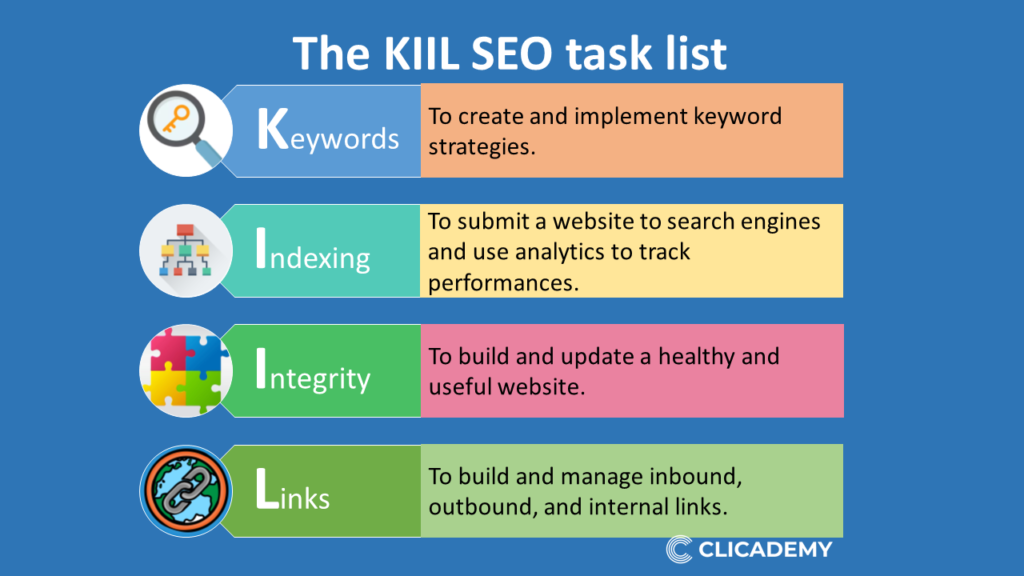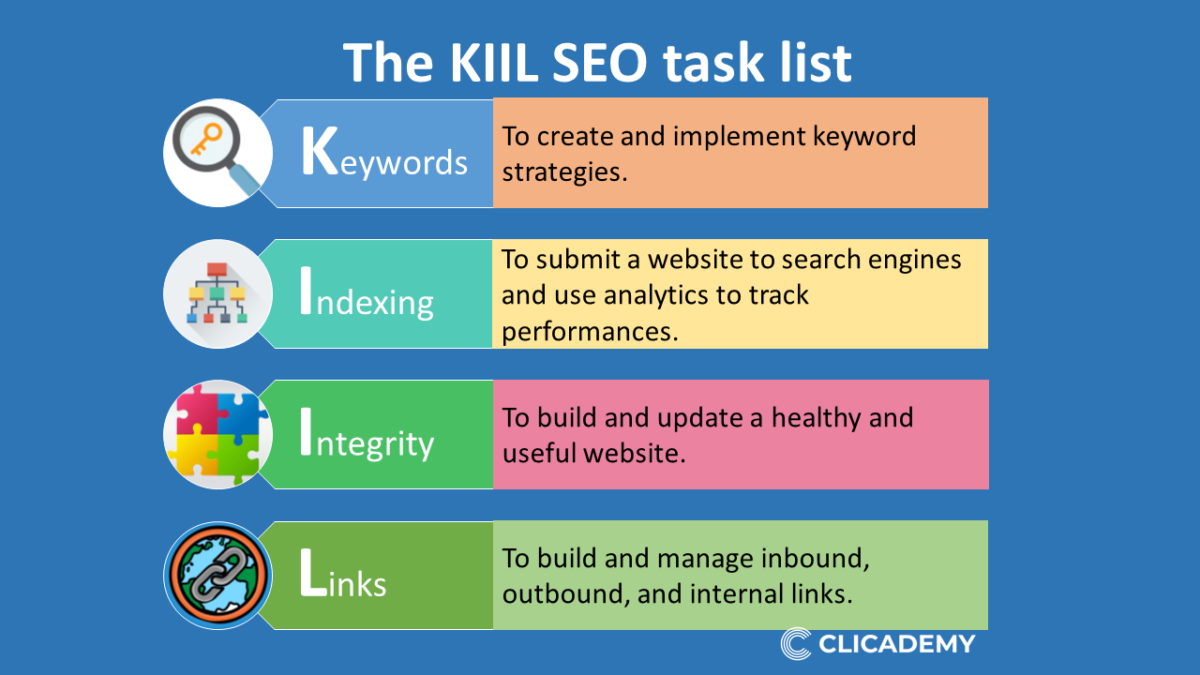Search engine optimisation (SEO) aims to increase a website’s visibility and ranking on the search engine results pages for specific topics. It is a complex job requiring constant effort, so an SEO task list can be overwhelmingly long or surprisingly brief.
The world’s most succinct search engine optimisation (SEO) operational model is KIIL, created by one of your Clicademists.
K-I-I-L has nothing to do with killing. It is the short form for four essential SEO operations: Keywords, Index, Integrity, and Links.

Let’s delve into each step of this method and explore real-world examples of how it can be effectively implemented.
(K) Keyword Research and Strategy
The first step, ‘K’, stands for keywords. This is the foundation of SEO, where you identify the terms and phrases potential customers use to search for products or services related to your business. A robust keyword strategy involves analysing search volume, competition, and relevance to ensure the chosen keywords align with your content and business goals.
For example, a local bakery might target keywords like “artisan breads” or “gluten-free pastries” to attract a specific audience. Tools like Google Keyword Planner and SEMrush can aid this research, providing insights into keyword performance and trends.
(I) Indexing the Website
The second letter, ‘I’ in KIIL, represents indexing the website. Indexing is how search engines organise information before a search to enable super-fast responses to queries. Ensuring that your website is indexed correctly involves submitting a sitemap to search engines, optimising site structure, and improving crawlability.
A real-world example is when a new e-commerce store submits its sitemap to Google Search Console to ensure all product pages are found and indexed by Google’s search bots. Nowadays, codeless marketing, website builders, and AI-empowered utilities have made this process easy and fast to let Google Analytics GA4 and Bing Search start crawling in your website.
(I) Integrity of the Website
The next ‘I’ represents website integrity. This step focuses on your website’s technical health, including site speed, mobile-friendliness, secure connections (HTTPS), and error-free pages. A website with high integrity provides a better user experience and is favoured by search engines.
Another primary consideration of a website’s integrity is its activeness. The website’s content needs to be dynamic and frequently updated.
For instance, an online news portal might use tools like GTmetrix to analyze and improve page load times, ensuring readers can access content quickly and efficiently.
(L) Links Building
Lastly, ‘L’ stands for building links, including forward links (outbound) and backlinks (inbound). Quality links from reputable sites can significantly boost your SEO as they endorse your content’s credibility and authority.
A practical example is a tech blog that produces high-quality content and gets linked by authoritative sites like TechCrunch or Wired. These backlinks not only drive traffic but also enhance the blog’s search rankings.
The K-I-I-L SEO
Clicademy claims the originality of the KIIL model for SEO. By following the KIIL method, businesses can create a comprehensive SEO strategy that addresses all aspects of their online presence. From the initial keyword research to the ongoing maintenance of website integrity and link-building efforts, each step plays a crucial role in achieving and maintaining high search engine rankings.
Implementing the KIIL SEO method requires diligence, consistency, and a willingness to adapt to the changing landscape of search engine algorithms. However, with a clear understanding of each step and a commitment to best practices, businesses can improve online visibility and attract more organic website traffic.
